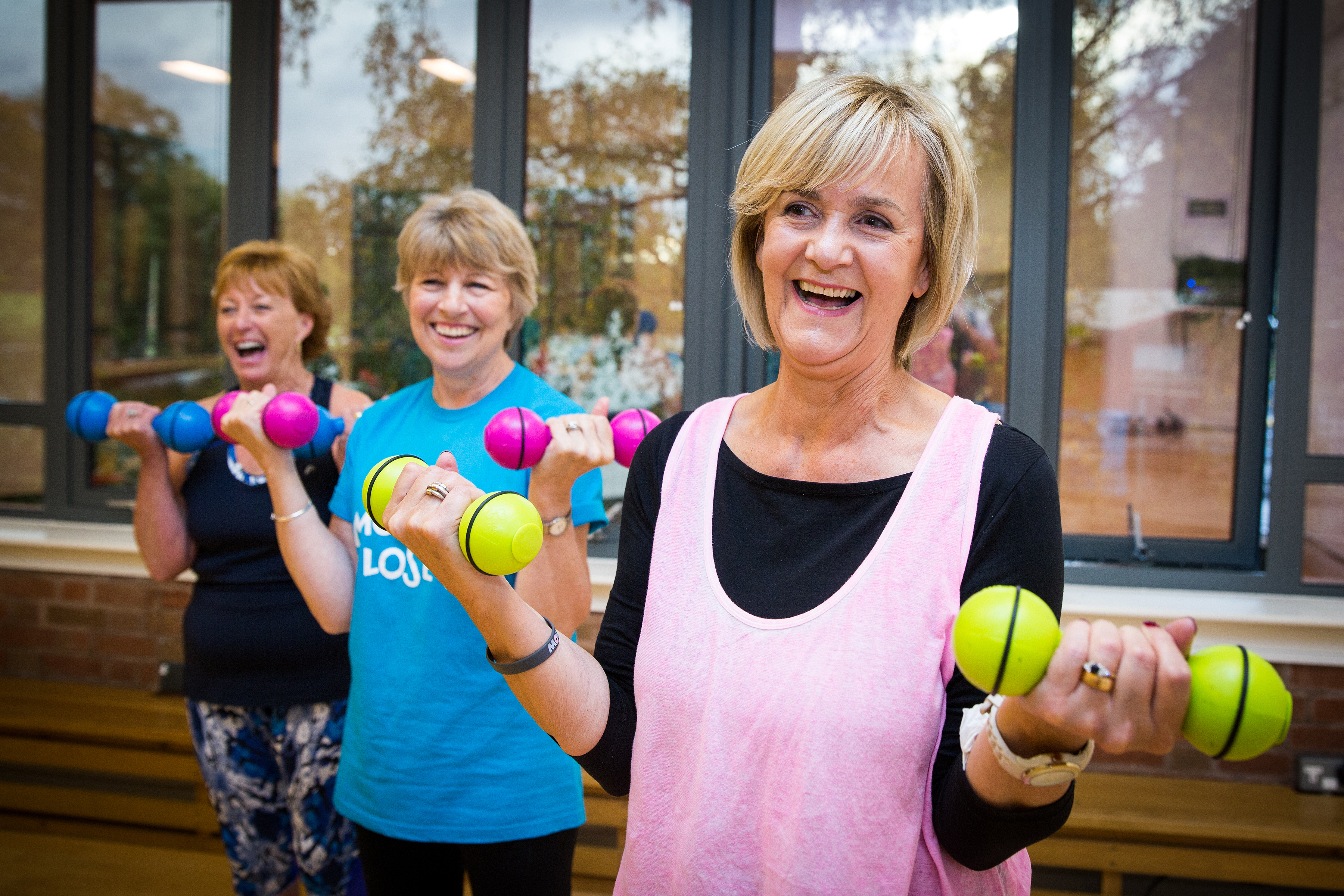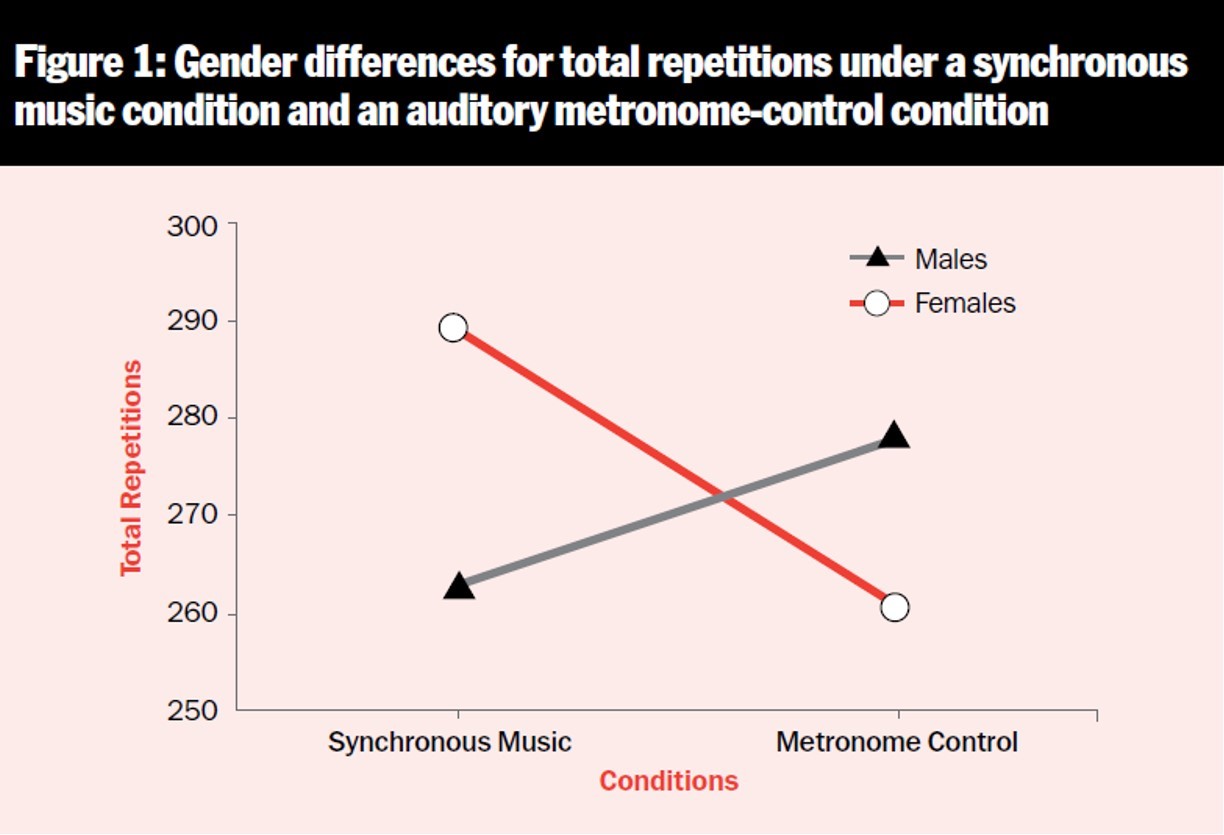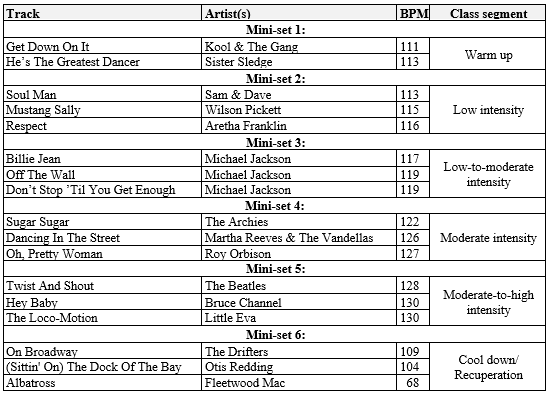Music makes you move it so that you never lose it!

By
Dr Costas I. Karageorghis
Author of Applying Music in Exercise and Sport (Human Kinetics, 2017)
Reader in Sport Psychology, Department of Life Sciences, Brunel University London
Introduction
When governing bodies of sport began to enforce bans on the use of personal listening devices during competition, the potentially powerful effects of music were put firmly in the spotlight. At the 2007 New York Marathon, the organisers banned the wearing of headphones but hundreds of runners flouted the new regulation and risked disqualification; such was their desire to run to the beat. Over the subsequent decade, what has been witnessed at races around the world confirms the precedent set in New York; trying to separate athletes and exercisers from their headphones is a decidedly risky business!
It is notable that as well as the popularity of music for those running or training alone, group exercise with music took off in a big way a good 20 years before the advent of the iPod. At the vanguard of this new exercise trend was Hollywood leading lady, Jane Fonda. She realised that there was something captivating about bringing people together to exercise in synch with a musical beat, no matter what their age or body shape. Fonda also had the business acumen to package exercise-to-music effectively and sell it on a grand scale. There can’t be many women over 50 who don’t have a Jane Fonda VHS cassette tucked away somewhere in the attic!
In this article we will explore how music can help older people who want to maintain a physically active lifestyle, the powerful influence of music on the mind–body relationship, and what the indefatigable Move it or Lose it instructors can do to maximise the benefits associated with the use of music in the classes they lead.

Sound Effects
The majority of older adults have a firm understanding of the numerous health benefits associated with habitual physical activity. Nonetheless, the thought of the physical discomfort associated with a workout is often all it takes to stop many from seeing through their best intentions. There is a growing body of scientific work addressing the positive effects that music can have on physical exercise; such effects are often magnified in the case of older adults. Music can be used to mentally prime an individual before they start exercising – perhaps by reminding them of good times from their younger years, function as a rhythmic cue during exercise or aid post-workout recovery. The 200 or so studies in this area have revealed four main ways in which music can positively influence the pre-workout mindset of exercisers, their experience/performance during exercise, and recovery processes post-exercise. We will go on to explore the four ways in which music takes effect.
1. Pepping up and psyching down
Music alters emotional and bodily arousal and can therefore be used as a form of stimulant prior to an exercise bout, or even as a sedative to calm a person’s nerves if they are feeling particularly anxious or het up. Most commonly, music is used as a stimulant in the pre-workout phase albeit that many professional athletes use calming music before big competitions as a relaxant. A former undergraduate student of mine, the superheavyweight boxer Audley Harrison, famously used the relaxing tones of Japanese classical music to calm his pre-fight nerves en route to winning a gold medal at the 2000 Sydney Olympic Games.
Many older adults who exercise regularly use loud, upbeat music from their formative years to pep themselves up and get in the right frame of mind for a workout – the upbeat songs of The Beatles or Rolling Stones can work particularly well in terms of assuaging lethargy and priming an exerciser for action. U.S. president Barack Obama was known to use Eminem’s Lose Yourself to get psyched-up for his big speeches!
It is often the lyrics of a song and extramusical associations (i.e. what one personally associates with a piece of music) that will have the strongest emotional influence. The track Lose Yourself, for example, carries a strong message in the lyrics and powerful associations given how many times it has been used as a walk-on track by well-known athletes. Physiological processes such as heart and breathing rates tend to react sympathetically to the rhythmical qualities of a piece of music. As a rule of thumb, fast tempi (> 120 bpm) are associated with higher levels of arousal than slow tempi (< 100 bpm). The arousal regulation principle can be applied equally well to post-workout recuperation among older adults.
At the end of a class, try using a recuperative playlist that gradually descends in tempo from 100 bpm to around 70 bpm; the lower end of this tempo range corresponds with resting heart rate. Recent research has revealed several benefits associated with the use of music to aid post-workout recovery. Such benefits include a more positive emotional state, faster reductions in heart rate and blood pressure, and superior clearance of blood lactate from the working muscles. Feeling better at the end of a workout is likely to encourage older people to make exercise a daily habit. So you can see how music can be used at all stages of an exercise session – in preparation, during and immediately afterwards.
2. Alleviating the symptoms of fatigue
During submaximal exercise programmes, a good tune will narrow an exerciser’s attentional focus and, as a consequence, divert their mind from sensations of fatigue. This diversionary technique, referred to by psychologists as dissociation, lowers perceptions of exertion or how hard the exerciser thinks they’re working out. Effective dissociation can promote a more positive emotional state through helping older people avoid thoughts that are driven by the symptoms of fatigue.

Notably, the dissociation effect holds only for low-to-moderate intensities of exercise; at high intensities, such as when doing sit ups to exhaustion, perceptions of fatigue almost completely override the impact of music. This is because attentional processes are dominated by bodily feedback such as that related to heavy breathing and the accumulation of blood lactate in the working muscles. Research has shown consistently that the dissociation effect results in a 10% reduction in perceived exertion. If the music is well selected with older people’s personal preferences and the nature of the exercise in mind, the reduction can be as great as 12%. Accordingly, a well-crafted playlist will enable older adults to switch off from the pain and make their experience of an exercise class more pleasurable.
3. Getting into the groove
Research has shown that the synchronisation of music with repetitive exercise is associated with increased levels of work output; ergo, music can give older exercisers more staying power. This applies to continuous and rhythmic activities such as running, rowing and indoor cycling but also holds in the case of exercise-to-music sessions. Musical tempo can regulate movement and prolong performance via the mechanism of neuromuscular efficiency. To facilitate understanding of the principle underlying this mechanism, a good analogy entails the fuel efficiency of your car. Imagine driving your car across town and encountering green traffic lights at each junction – you need less fuel to complete your journey and you also get there much sooner than when your drive is punctuated by a series of red lights. Music has a metronomic effect that regulates movement and makes energy use more efficient – almost like encountering a green light at each junction!
In a recent study at Brunel, we showed how women tend to derive greater benefit than men when synching their movements to a musical beat. We used a series of six circuit-type exercises, such as step ups and jumping jacks, each of which were performed in strict time with a musical beat to the point of exhaustion. Women outperformed men in terms of the number of repetitions completed and reported more positive emotions while working harder than men (see Figure 1 for a simplified representation of the performance data).

Interestingly, the men appeared to derive no performance benefit from synchronous music when it was compared to a bleeping metronome that served as a control condition. In explaining our findings, we reflected on the musical experiences of females and males during their formative years: girls are more likely to engage in movement to music-based activities and demonstrate a greater desire to engage in dance-related activity. Our findings also showed that women were, on the whole, more adept at keeping in time with a musical beat.
4. Enhancement or maintenance of motor skills
Music can impact positively upon the learning of motor or movement skills. Think back to your primary school days when your first PE classes were most likely set to music. Music gave you the opportunity to explore different planes of motion and to improve your coordination skills through dance and play. Scientific studies confirm that the application of purposefully selected music can have a positive effect on how motor skills are learned and retained. There are three plausible explanations for the enhancement of skill acquisition.
First, music replicates forms of bodily rhythm and many aspects of human locomotion. Hence, music can transport the body through effective movement patterns; the music renders the audible visible. Second, the lyrics in music can reinforce essential aspects of a particular type of movement. For instance, during weight training, the track Push It by Salt-n-Pepa is ideal in reinforcing the technique required for the bench press or press behind neck – both commonly-used upper-body exercises. Third, music makes the learning environment more fun, which in turn, can increase older people’s intrinsic motivation to master new skills or reawaken skills that were acquired years ago.
Encourage those in your charge to experience how music can promote the maintenance of motor skills: when at home, they might kick off their shoes and dance in a completely uninhibited manner to a favourite pop song from way back when. Exploring different ways of moving and losing yourself in a piece of music is a hugely rewarding experience. It will also help your charges to feel a little younger; invariably, they will begin to reconnect with the teenager lurking within!

Selecting Music for your Classes
Nature of the exercise activity
As a starting point, you should consider carefully the nature of the activity that you are leading, the intensities that participants will reach and the characteristics of the participants, such as age and gender. Make selections from a list of your class members’ preferred tracks that have a tempo, rhythm and ‘feel’ that match the type of activity that you are leading. If you want music for repetitive and rhythmical movements, then selections with a regular beat are in order. If you are leading stretching or holistic exercise routines such as yoga or Pilates, then gentler, more ambient music will be more appropriate.
Intensity of exercise
If your goal during warm-up is to elevate the heart rate of your class members to ~110 bpm, then limit your choices to music with a tempo in the range 80-120 bpm. Mix the tracks in such a way that the gradual rise in music tempo matches the intended gradual increase in heart rate. A more sophisticated approach entails programming components of the workout to coincide with segments of music. That way, work time and recovery time can be punctuated by music in such a way that soft/slow music (recovery phase) will follow loud/fast music (work phase). This approach is especially suited to tightly structured sessions such as circuit or interval-type training.
Our recent research at Brunel has uncovered the tendency that individuals have to coordinate bursts of efforts with specific segments of a musical track that they find especially motivating; an occurrence we have referred to as segmentation. This effect is particularly strong if an exerciser knows a track well and can anticipate the flow of the music. Consider, for example, the rousing chorus of Gold by Spandau Ballet and how the inspiring lyrics can imbue an older exerciser with energy. Research also shows that it is beneficial to match the tempo of music with the intensity of a workout. For example, if you are leading a class in which activity is around 60% VO2max (an intensity that might be maintained for 25-30 mins), then medium-tempo music (115-125 bpm) will be more effective than fast-tempo music (135-145 bpm).
Optimising music selections
Think about seguing tracks or creating “mini-sets” in the same way a DJ might do to manipulate people’s thoughts, feelings and behaviours in a nightclub scenario. The tracks should correspond with the different parts of a class, such as warm-up (slow tempo), low intensity (medium tempo) and moderate-to-high intensity (fast tempo). To optimise the coherence of the music programme, you should listen carefully to beat patterns (not just tempi), match tracks from the same epoch and think about themes that might link pieces of music together in peoples’ minds (e.g. Eurovision-winning songs from the 80s or selections from a well-known movie). Exploit class members’ cultural associations and try to surprise them with your creativity. This will add a whole new dimension to your classes that will hopefully be reflected in member retention from year to year.
When selecting music for continuous and rhythmic exercise activity, keep the following six criteria in mind – the music should have:
- A strong, energising rhythm
- Positive lyrics with movement-related associations (e.g. Gonna Make You Sweat (Everybody Dance Now) by C+C Music Factory feat. Freedom Williams)
- A rhythmic pattern that ideally matches the movement patterns of the activity you are leading (e.g. a march-like rhythm for walking-related activities)
- Uplifting melodies and harmonies (combinations of notes)
- Associations with physical activity, sport, triumph, or overcoming adversity
- A style that suits the cultural upbringing and musical tastes of your class members
Ensure that you have tracks at different tempi to coincide with low, medium and high exercise intensities. A further consideration is to create variety in your selections and to churn your playlists regularly – say every 2-3 weeks. Table 1 will get you started by giving you examples of motivational tracks suitable for different segments of an exercise class with 60–70-year olds from the British population in mind. The mini-sets in Table 1 capitalise on the principles of tempo-matching, beat-matching, epoch-matching, theme-matching and combinations thereof.
Table 1 Examples of Motivational Music Selections for an exercise class for older people (60–70 years) from the British population.
Summary
We have established that there are many ways in which music can be applied to the workouts of older adults and keep them on track in terms of maintaining a healthy exercise habit. The effects of carefully selected music in exercise are both quantifiable and meaningful. The growing body of scientific evidence leads to the possibility that effective application of music may result in long-term benefits such as greater exercise adherence and more positive attitudes towards physical activity. Women tend to be stronger responders to music than men, particularly when workouts are coordinated to music (see Figure 1). I hope that through applying the principles outlined herein, you will be able to harness the stimulative, sedative and work-enhancing effects of music with greater precision, and create the perfect soundscape for those who you lead in fitness.
“I put together a playlist and listen to it during the run-in. It helps psych me up and reminds me of times in the build-up when I’ve worked really hard, or felt good. With the right music, I do a much harder workout.”
Paula Radcliffe (Marathon World Record Holder)
Dr Costas Karageorghis is a Reader in Sport Psychology at Brunel University London and his latest book is entitled Applying Music in Exercise and Sport (ISBN: 978-1-4925-1381-0). Connect with him on Twitter: @SAVIBrunel
[/vc_column_text][/vc_column][/vc_row]

Soraya Emment
Dr Costas, as usual, sharing his knowledge, competence, experience and many talents intelligently. An Insightful and inspirational article.
Elaine Barton
Excellent article. Gave me lots of food for thought.
Emma Healy
Really interest and very helpful prior to writing my lesson plan.
Emma Healy
Really interesting and very helpful prior to writing my lesson plan.
Sally Stevenson
Very useful and backs up my own personal theory, thank you
Liz Winter
Interesting article and I think it will influence my Session plan. Incorporating suitable Music to enhance the experience for all.
Jeanne Burnett
Very helpful.. Im struggling with this a bit..thank you
LINDA BERRY
Very interesting and helpful.
LINDA BERRY
Very interesting.
Pauline Kilpatrick
Found this very interesting actually confirmed my own belief but gave me some interesting tips too. Thank uou
Sue Gathercole
Really useful and some handy tips
Marie Marques
Interesting and informative article. Music is a universal language we can all relate to. It certainly helps me to go that bit further in classes that I attend.
Caroline Weinberger
Very helpful article which gave me some useful tips and confirmed a sneaking suspicion that I engage more fully in physical activity when it is accompanied by music. Thank you.
Steve Wilson
Have me some good ideas 🙂
Ann Newton
I Have been an exercise to music teacher for many years now, its always good to update and learn new theories!
Mary Anne Lindenberg
very interesting and informative , thank you!